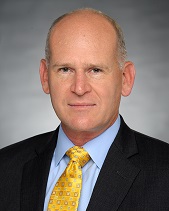Given the impact of COVID-19, health systems are rethinking how to align with and assist physicians. It’s an integral part of the opportunity to reimagine their future with respect to their market, their medical staff and the community they serve.
They should look no further than clinically integrated networks (CINs). CINs have already proven, in many markets, to be the avenue by which health systems create value for physicians through:
- Better alignment and coordination among providers, creating more effective and efficient care for their patients
- Access to new digital technologies
- Improved financial situation, including access to assets needed to manage care, especially risk-based care
They also provide value to their communities through:
- Improved coordination of care
- Greater access to providers
- Enhanced ability to address health equity, disparities and social determinants that ensure health, not just treat it
Elevating CIN Performance
For strong performers and underperforming CINs alike, it’s time to move to the next-generation CIN.
A number of events are coalescing to spur an update of your clinical integration strategy, including:
- The past year has shown the downside of fee-for-service, with the stark drop in non-COVID-19 patient volume during the pandemic
- The upside of taking risk has been made clearer
- CMS continues to push value-based care
- Federal rules and regulations are undergoing significant modifications that make physician alignment easier and more impactful
- Physicians are looking for alignment, and the inherent safety, beyond employment
Physicians and health systems looking to move to the next-generation CIN and enhance their revenue and access to premium dollars, the answer is simple: It is time to take on more risk—along with ensuring the appropriate infrastructure to manage it.
CINs are in an excellent position to capitalize on the trend to more downside risk. In addition to better coordination of care, CINs are able to align incentives for all providers within the health ecosystem and have the engagement of many primary care physicians. They can also fund the necessary resources and are able to back-stop the potential losses that members might see.
Why should CINs consider taking more risk? First, it pays off. As seen nationally across the Medicare Shared Savings Program (MSSP) for year and more recently the Medicare Direct Contracting (MDC) program, the more risk that a provider organization takes on across more lives, the better the entire network performs on quality and cost metrics.
Equally important, whether you are ready or not, CMS is moving more strongly to downside risk. That’s true both with the Pathways to Success rule changes and the MDC program, which require providers to accept downside risk as a condition of participation – in exchange for first dollar savings and enhanced patient engagement options.
5 Keys for CIN Success with Downside Risk
To reach the next level of performance and successfully take on downside risk, CINs need to put in place strategies and processes to improve coordination of care, mitigate the potential for large losses while generating better returns for the network and its members.
- Model and Forecast the Financial Risks and Rewards
CINs must have the capability to model the financial implications of taking on more risk. The modeling should reflect the changing reimbursement for all lines of business across fee-for-service, hybrid value-based, and capitated contracts.
Understanding the financial implications puts all participants on the same page. For example, it will be important to first acknowledge that there will be fewer inpatient admissions. A well designed pro forma with funds flow assumptions gives the CIN the necessary foundation to agree on and develop strategies needed to mitigate the loss of that revenue (e.g., market share growth, lower costs, new pricing strategies, etc.).
- Align Providers Strategically
Prior to entering into any risk arrangement, a health system with their employed physicians and independent physicians, and to some extent, the payer, must all have an aligned vision, purpose and strategy. Often the largest stumbling block to success is strategic misalignment: For example, health system leadership doesn’t necessarily see the value in the health system fully funding the infrastructure of the CIN, thinking that physicians should have some “skin in the game.” But physician members of the CIN believe it is their hard work that will generate the improved performance so that the health system should fully fund the operations of the CIN – at least in its first years of operation.
- Align Physicians Financially
A physician’s level of risk is one of the most important factors in succeeding in risk contracts. A funds flow mechanism that rewards improved performance on cost and quality, combined with timely access to panel performance data, is essential to transforming care delivery.
- Add New Pop Health Management Capabilities
If you’re already in upside risk contracts, then you probably have some of the requisite capabilities in place. As you look to take downside risk, there are additional capabilities you must acquire such as a strong care management information platform to proactively risk stratify and identify impactable persons.
Other key areas:
- A robust medical management system to analyze claims data in near-real time and identify patterns in member and provider utilization of services for rapid care planning and intervention.
- Actuarial services
- Claims adjudication
- More robust member services capabilities
In all cases, a cost/benefit analysis can help determine if you should build, buy or rent based upon size of network and number of covered lives.
- Extend CIN Into a High-Performing and Comprehensive Network
It is critical to establish a high-performing, perhaps narrow, network where physicians and other providers deliver against targeted cost and quality metrics. Then the network is able to demonstrate the advantages to beneficiaries of getting their care in-network.
CINs should integrate community-based organizations (CBOs), particularly for Medicaid and other higher-risk populations. Well-defined non-medical service availability and closed-loop referrals also are important, as they can address key social determinants of health (SDoH) gaps and drive reduced total cost of care by enabling a focus on management of chronic conditions and healthier behaviors.
Integrating CBOs is a proven method in Medicare Advantage plans, but commercial plans have been slow to adopt this approach. The narrow network MUST use accurate and timely data to measure provider performance and report across primary care and specialties. Accessing this actionable data depends on having a platform that collects claims and health information.
Even as COVD-19 vaccines become increasingly available and a new administration settles in, there is no reason to believe CMS, state Medicaid departments and employers will ease pressure to reduce the total cost of care while improving quality. Providers affiliated with CINs that are well prepared for downside risk will find themselves most successful as it becomes more and more of a ticket to play rather than a strategy for the highest performers.
Please contact Brent Hardaway at bhardaway@copehealthsolutions.com, Allen Miller at amiller@copehealthsolutions.com or Stephanie King at sking@copehealthsolutions.com to learn more about moving your CIN to downside risk and higher performance.


